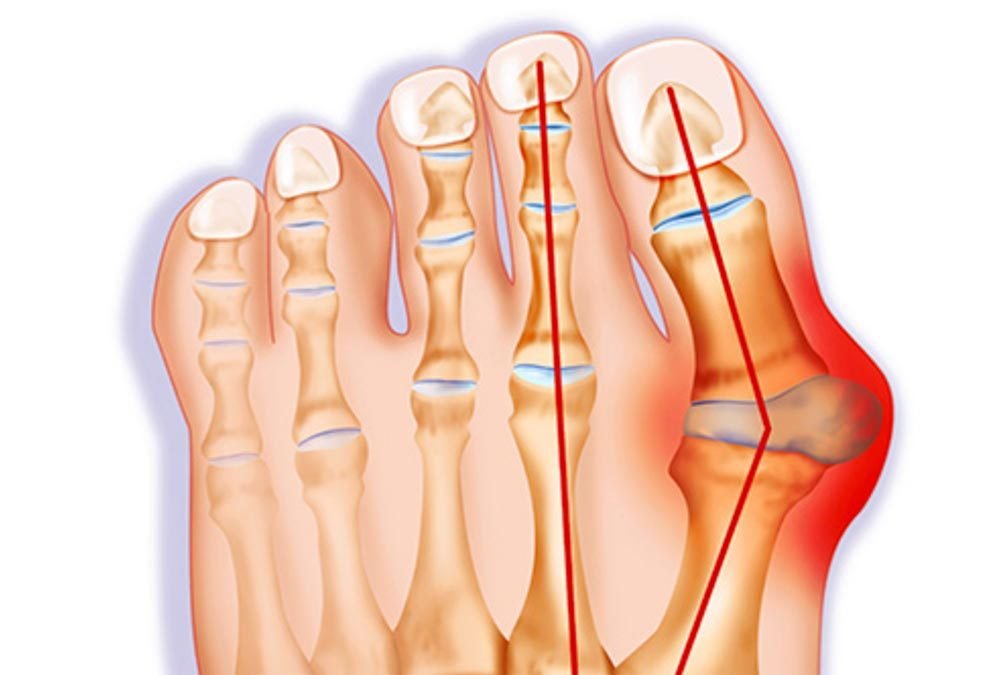When you hear “bunion,” you may automatically think of your grandmother, or another elderly figure in your life. The truth is, though, that bunions know no age and can affect anyone.
What Causes Bunions
Bunions are most common in women, as females often wear narrow shoes that force toes into an unnatural position. Bunions have a strong genetic cause. Bunions can also be a side effect of a pre-existing inflammatory or neuromuscular condition.
In addition to the visible deformity on the inside of the foot, other symptoms of bunions may include pain and tenderness, redness and inflammation, hardened skin, restricted motion, or burning pain. While bunions may be painless, others may cause severe discomfort and make it difficult to walk. If a bunion is painful or worsening, it might be time to start exploring your treatment options.
Nonsurgical Treatment
While nonsurgical treatment cannot completely get rid of a bunion, it can reduce the size and alleviate the pain. Bunion pain can typically be managed by doing something as simple as switching shoes. Additionally, you can purchase bunion pads at any drugstore or pharmacy. These pads cushion the painful area on your foot, acting as a shield to reduce impact and pain. You can also ice the affected area for 20 minutes at a time, several times a day, or try medication such as ibuprofen to relieve pain and swelling. However, nonoperative treatments cannot straighten the toe once it deforms.
Surgical Treatment
If pain persists or deformity worsens, your doctor might recommend surgery. Bunion surgery realigns bone, ligaments, tendons, and nerves, allowing the big toe to be brought back to its original position. Bunion surgery is not recommended solely for cosmetic reasons, as the recovery can be lengthy and painful. Qualified candidates for surgery are individuals whose pain restricts their everyday activity, such as walking or wearing reasonable shoes, chronic inflammation of the big toe, or deformity.
When talking about the success rates of bunion operations, Dr. Don Stewart from Arlington Orthopedic Associates explained that, “95% of people can get better from this.”
Bunion surgeries are an outpatient surgery, with no hospital stay. There are a couple of different surgical procedures used to treat bunions, depending on the severity of your condition:
- Osteotomy is the most common type of bunion surgery. During this type of procedure, the surgeon will remove the bunion and realign the bones in your foot. Chevron or scarf corrections are examples of this kind of procedure.
- Arthrodesis is a procedure where the surgeon fuses together the two bones in your big toe joint. This kind of surgery is only recommended for individuals suffering from severe deformity on their foot. Afterwards, movement of the toe is limited and the individual will not be able to wear high heels.
- A Lapidus Arthrodesis Correction corrects severe deformities and maintains motion by placing limited fusions in the middle of the food.
- Excision arthroplasty is the least common kind of bunion surgery, and it is reserved for severe bunions, typically found in the elderly. This procedure involves removing both the bunion and toe joint. Scar tissue ultimately creates a false joint.
Recovery
Recovery is based on the type of bunion correction. Simpler surgeries allow immediate weight bearing in a posted shoe or boot. Fusions require a short period of immobility to allow soft tissues to recover. Keep activities very light the first two weeks and focus on elevation. Sitting work can resume within several days if the foot is allowed to be elevated. After two weeks, activities will increase based the surgical correction and the amount of swelling.
It’s recommended to keep your foot elevated as much as possible, and to ice your foot to reduce inflammation and speed the recovery. You can expect your foot to be swollen for about three months post-operation, and it may be six months before you can wear normal shoes again, depending on your recovery process and your doctor’s recommendation.
Your doctor might recommend physical therapy during your recovery, but most therapy can be done independently. Exercises can help restore your foot’s strength and range of motion following surgery and time in a boot.
When you come to see one of our foot and ankle specialists, they can determine the best course of action for you. By assessing your age, lifestyle, and the severity of your bunion, our physicians will determine if you are a good candidate for surgery, and which surgical option is the best route to take.









